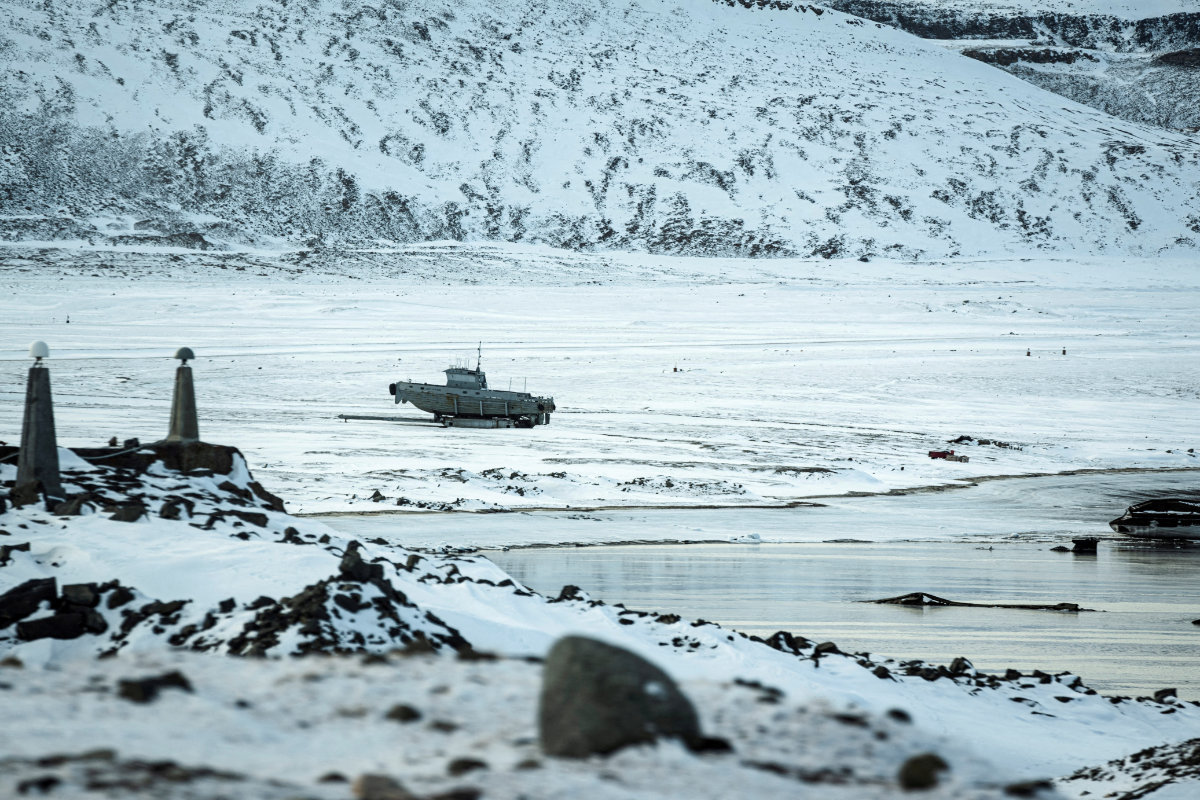ANKARA: In a move that is likely to increase tension between Ankara and Paris, French Interior Minister Gerald Darmanin announced on Monday that France will ban the Turkish ultra-nationalist group the Grey Wolves.
The group is linked to the Nationalist Movement Party (MHP), a political ally of the ruling government in Turkey.
During the recent conflict in Nagorno-Karabakh, where France and Turkey backed opposing sides, the group became notorious for organizing “Hunt for Armenians” marches in France and for vandalizing the Armenian Genocide memorial outside Lyon with their own slogans and references to Turkish President Recep Tayyip Erdogan.
During the march, the group members threatened Armenians with slogans such as “We are going to kill them.” Four people were injured in Lyon last Wednesday during clashes between Turkish nationalists and Armenians who were protesting against Azerbaijan’s military moves.
The banning of the group, which was urged by the International League Against Racism and Anti-Semitism and the Coordination Council of Armenian Organisations in France, will be discussed by the French cabinet on Wednesday.
The Grey Wolves was established in the 1960s in Turkey by MHP as a militant wing and was responsible for triggering chaos in the streets in 1970s and 1980s when its members fought leftists and were responsible for many assassinations.
Their salute symbol, with the thumb touching the tips of the middle two fingers and the index and little fingers raised, is seen by many as neo-fascist and was banned in Austria last year. A ban has also been considered in Germany.
This year in August, Russian International Affairs Council, a pro-Kremlin think tank, also labeled the group as an “extremist” organization.
The Grey Wolves have active branches in European countries with a significant Turkish population, such as Germany, Belgium, Netherlands and France.
Samim Akgonul, a political scientist at Strasbourg University in France, said the Grey Wolves are not the most visible Turkish organization in France but they have been active from time to time, especially during crises related to the Armenian issue, such as the French memorial laws recognizing the Armenian genocide.
“Historically the supporters of the Turkish far right MHP party are organized autonomously in Europe, separate from Turkey’s official bodies such as the Turkish Islamic Union for Religious Affairs (DITIB), the European division of Turkey’s Directorate of Religious Affairs,” he told Arab News.
He said that since the coalition between the ruling Justice and Development Party (AKP) and the MHP in Turkey in 2013, the mobilization of the Grey Wolves in favor of the Turkish state and the president had become much more frequent, especially in Lyon and Paris.
Mehmet Ali Agca, the Turkish ultra-nationalist who attempted to assassinate Pope John Paul II in 1981, was also linked to the group.
According to Akgonul, the main reason for their ban in France is their recent activity against French-Armenians amid an atmosphere of general violence.
He said they were also a collateral victim of the Islamist terror in France and the response of President Erdogan to those acts of terror.
Neither the Turkish government nor its nationalistic partner have reacted yet to the statement of French minister Darmanin about disbanding the group.
Turkey expert Matthew Goldman, from the Swedish Research Institute in Istanbul, noted that the Grey Wolves are not an officially organized group in France, and so Darmanin’s announcement that they will be “dissolved” leaves many questions unanswered until the ministers discuss the issue on Wednesday.
“The far-right politician Marine Le Pen accused Darmanin of merely using empty words, tweeting that it is meaningless to claim to disband a group that is not actually organized. Instead, she called for shutting down the AKP-connected Milli Gorus Islamic Confederation, which is an official organization with 70 mosques in France,” he told Arab News.
As French President Emmanuel Macron wants to compete with Le Pen to show that he is tough on both Turkey and Islamism, Goldman wondered whether he would turn to Milli Gorus next.
German police recently stormed a Milli Gorus mosque in Berlin as part of an investigation about suspected fraud over a COVID-19 subsidy program, prompting a very sharp reaction from Erdogan.
Goldman said that if French authorities take on Milli Gorus too, it was likely to spark a strong response from Ankara.
“The Grey Wolf aggressions, responding to both the Nagorno-Karabakh war and the France-Turkey dispute, appear to be the worst of both worlds for the French public: Street gang violence and Islamist violence, even though the Grey Wolves are actually more nationalist than Islamist,” he said.
“Hopefully French authorities will be able to prevent further violence, but they are already struggling to control the coronavirus pandemic and anti-lockdown protests, so the situation is ripe for more conflict,” Goldman added.



























